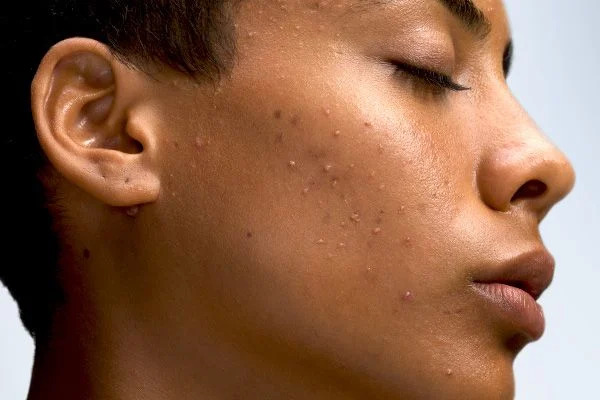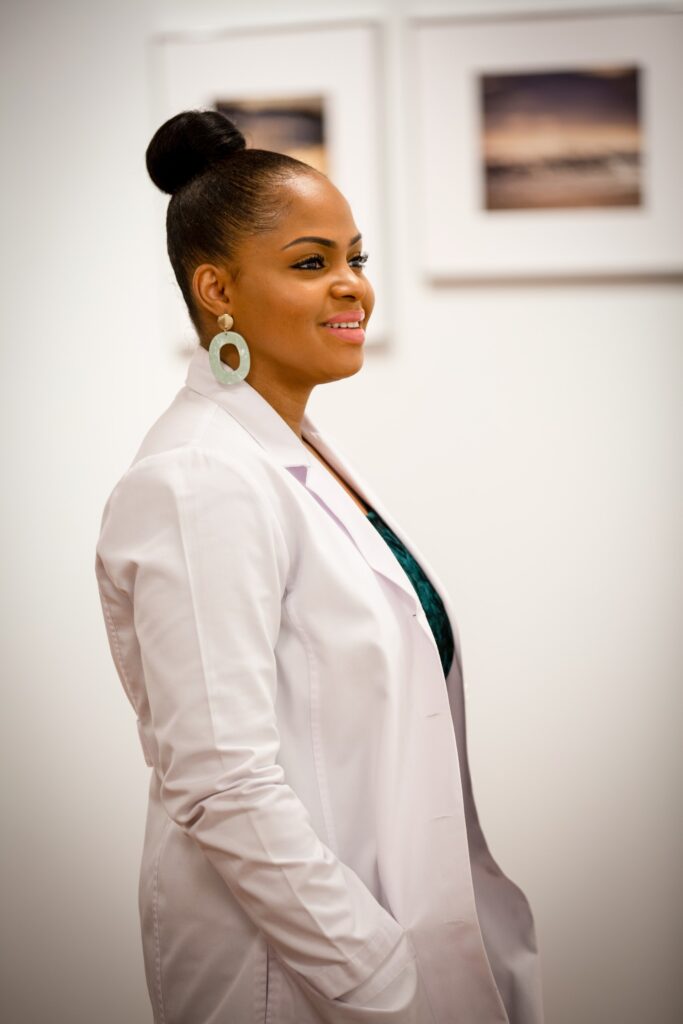Overview
Acne also known as Acne vulgaris is a common skin condition manifested by pimples and blemishes that form as a result of clogging of the hair follicles. The hair follicles may be clogged by dead skin cells or sebum –oil that keeps the skin from drying out. Acne breakout usually occurs on the face but it can also appear on the back, chest, and shoulders.
Who can get acne?
Acne can affect anyone at some point in their lifetime. It is most common among adolescents undergoing hormonal changes but can also continue into adulthood in both men and women. During puberty, hormones called androgens increase the size of the skin’s oil glands. These glands start producing more sebum (oil), which results in the clogging of the hair follicles.
Acne is also common among women over 25 years of age. Most of these women had acne during adolescence but the breakouts continue into their adulthood. It is hard to predict who will get severe acne, but you have a higher risk if one or both of the parents have had severe acne that left them with scars.
New studies have found that smokers of cigarettes (tobacco) are more likely to have acne than non-smokers. Therefore, smoking cigarettes may trigger acne.
Types of Acne
Acne can be classified into inflammatory acne and non-inflammatory acne.
Inflammatory Acne
Inflammatory acne is a skin condition that causes red, swollen, and sore bumps. These pimples contain pus, dead skin cells and excess oil. They are common on the face, back, chest, and shoulders. These blemishes include:
- Pustules: Bumps raised on the surface of the skin that contains pus.
- Papules: Bumps raised on the surface of the skin but do not contain pus.
- Nodules: Large, hard bumps buried beneath the skin.
- Cysts: Large, soft, fluid-filled bumps beneath the skin
Inflammatory acne shouldn’t be popped or squeezed since it can cause scars and infection and it will make the blemishes more conspicuous.
Inflammatory acne is often a chronic condition meaning that it can come back even after treatment. However, a good skincare routine can minimize and even prevent future breakouts.
Non-inflammatory Acne
The medical term for non-inflammatory acne is comedo. Non-inflammatory acne is less severe than inflammatory acne since they are not usually swollen or painful. Non-inflammatory acne can be classified into blackheads and whiteheads.
- Whiteheads: Plugged hair follicles that stay beneath the skin and produce a white bump. They are also known as ‘closed comedo’.
- Blackheads: Plugged follicles that reach the surface of the skin and open up. They look black on the skin surface because the air discolors the sebum, not because they are dirty. They are also known as open comedo
Causes of Acne
As we had discussed earlier, acne is majorly caused by clogged hair follicles and pores. Acne is largely a hormonal condition that’s driven by androgen hormones(testosterone). Several glands empty into the hair follicles (sebaceous glands). When too much material builds up inside the follicles and pores, a clog occurs. The following can lead to the development of acne:
- Excess or high production of oil(sebum) in the pore.
- The buildup of dead skin cells in the pore.
- Growth of bacteria in the pore.
Certain triggers increase the likelihood of getting acne. The most common trigger is puberty. During puberty, surges in androgens stimulate sebum production. Other triggers are:
- Hormonal changes that occur with pregnancy or the menstrual cycle
- Occlusive cosmetics, cleansers, lotions, and clothing
- High humidity and sweating
- Certain medications, such as medications that contain hormones, corticosteroids, and lithium, can cause acne.
- Family history. Researchers believe that you may be more likely to get acne if your parents had acne.
- The anaerobic bacterial species Cutibacterium acnes contributes to the development of acne
- There are few high-quality studies to demonstrate that stress causes or worsens acne.
How to Treat Acne
It can take many months or even years for acne to clear up completely. The treatment regimen we will recommend here at the pharmacy depends on the age of the person and the severity of the acne.
Treating Whiteheads and Blackheads (Comedonal Acne)
Over-the-counter treatments like Salicylic, Glycolic Acid, Benzoyl peroxide, and retinoids work well for treating blackheads and whiteheads
- Salicylic Acid (Beta Hydroxy Acid) is usually the first treatment recommended by medical experts. It is soluble in oil (sebum) hence it penetrates the clogged follicles and unclogs them. Salicylic acid should not be used with retinol as it can irritate. See some of our recommended picks here.
- Glycolic Acid (Alpha Hydroxy Acid) cleans the pores and removes the top layers of the skin (exfoliation) including comedones. It can also even out the skin tone and give a radiant glow.
- Benzoyl Peroxide has very strong anti-bacterial properties hence good for getting rid of acne bacteria
- Retinoids are vitamin A derivatives that help skin cell turnover. OTC retinoid topical creams/ointments that do not require a doctor’s prescription are tretinoin and adapalene. Pregnant people should use Retinoids. Retinol should not be used together with vitamin C. Topical retinoids should be used at night.
- Niacinamide is a vitamin B3 derivative and it is very good at controlling the excess production of sebum. Get it here.
- Azelaic acid is a natural acid found in various grains such as barley, wheat, and rye. It kills microorganisms on the skin and reduces swelling.
- Topical Antibiotics like clindamycin and erythromycin control surface bacteria that aggravate and cause acne. These antibiotics are more effective when used in combination with retinoids or benzoyl peroxide.
Treating Papules and Pustules
The first-line defense when treating papules and pustules is using cleansers that contain benzoyl peroxide or salicylic acid. When the papules become stubborn use of topical retinoids and antibiotics is recommended.
When the case is severe, oral medication such as azithromycin, erythromycin, or tetracycline is recommended. The doctor can also prescribe birth control pills and anti-androgen agents for women.
Conclusion
Acne is a vast topic and managing acne is a journey. Here at Portal Pharmacy, our pharmacists will gladly assist you on the journey of managing acne. Feel free to contact us via call or WhatsApp chat at +254 740 637700


